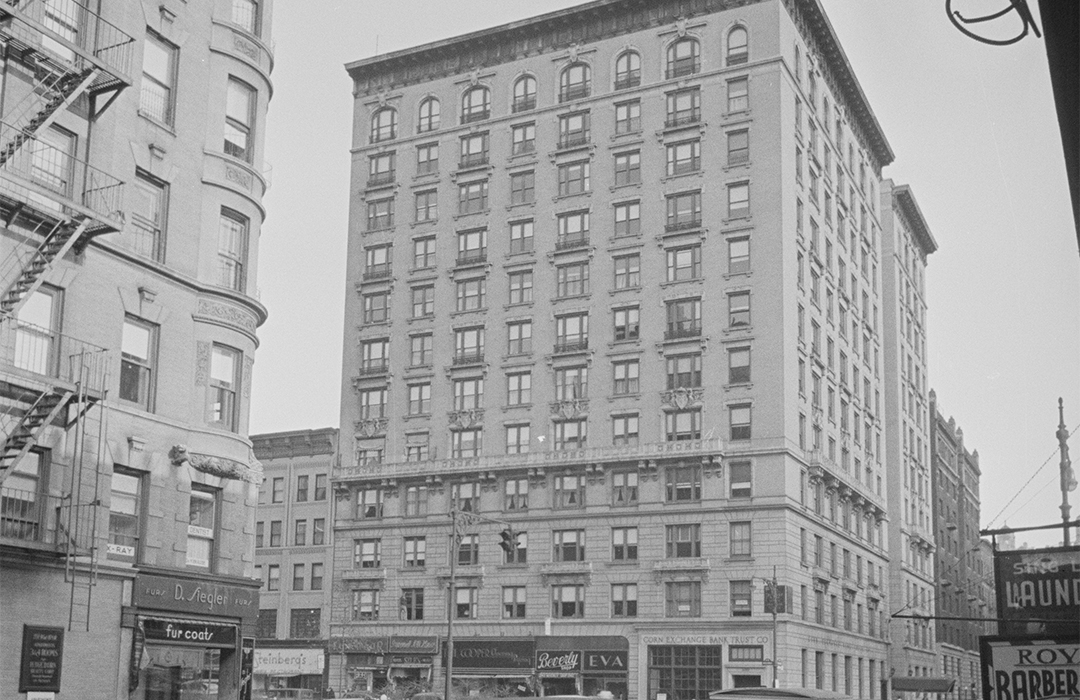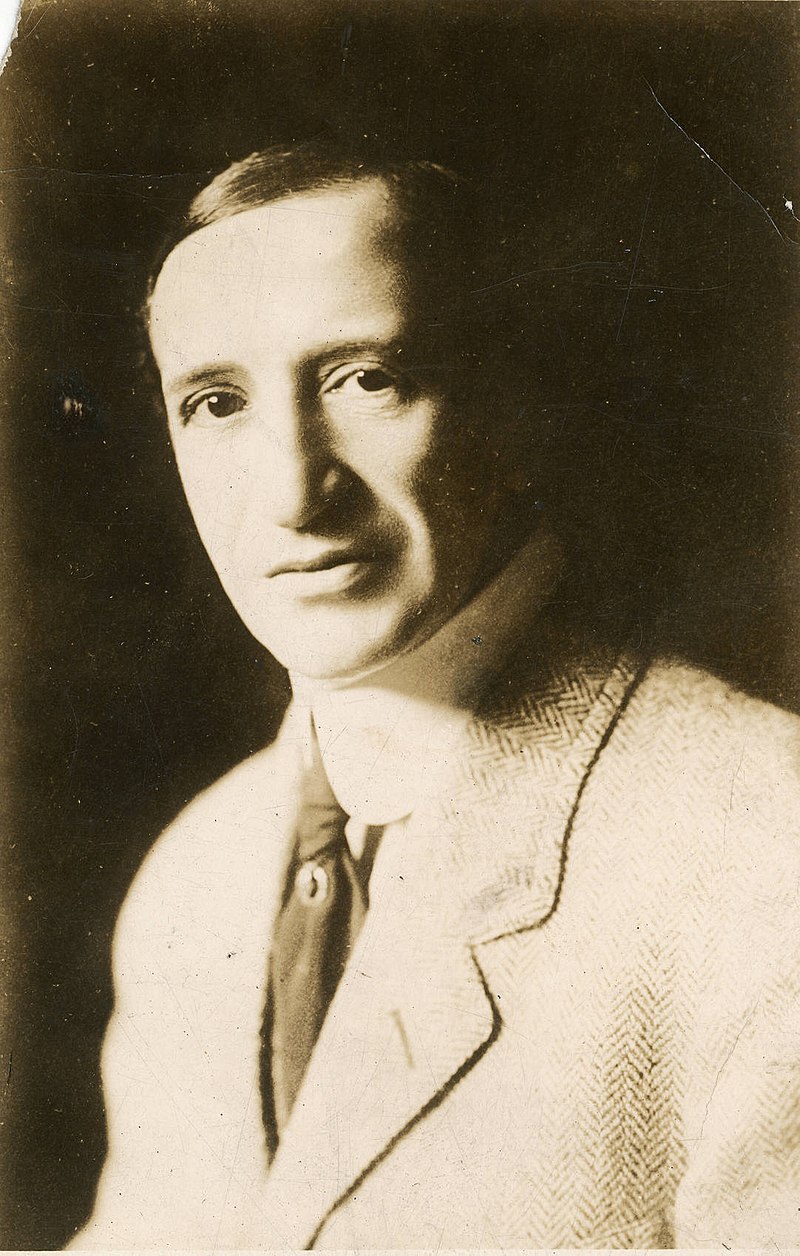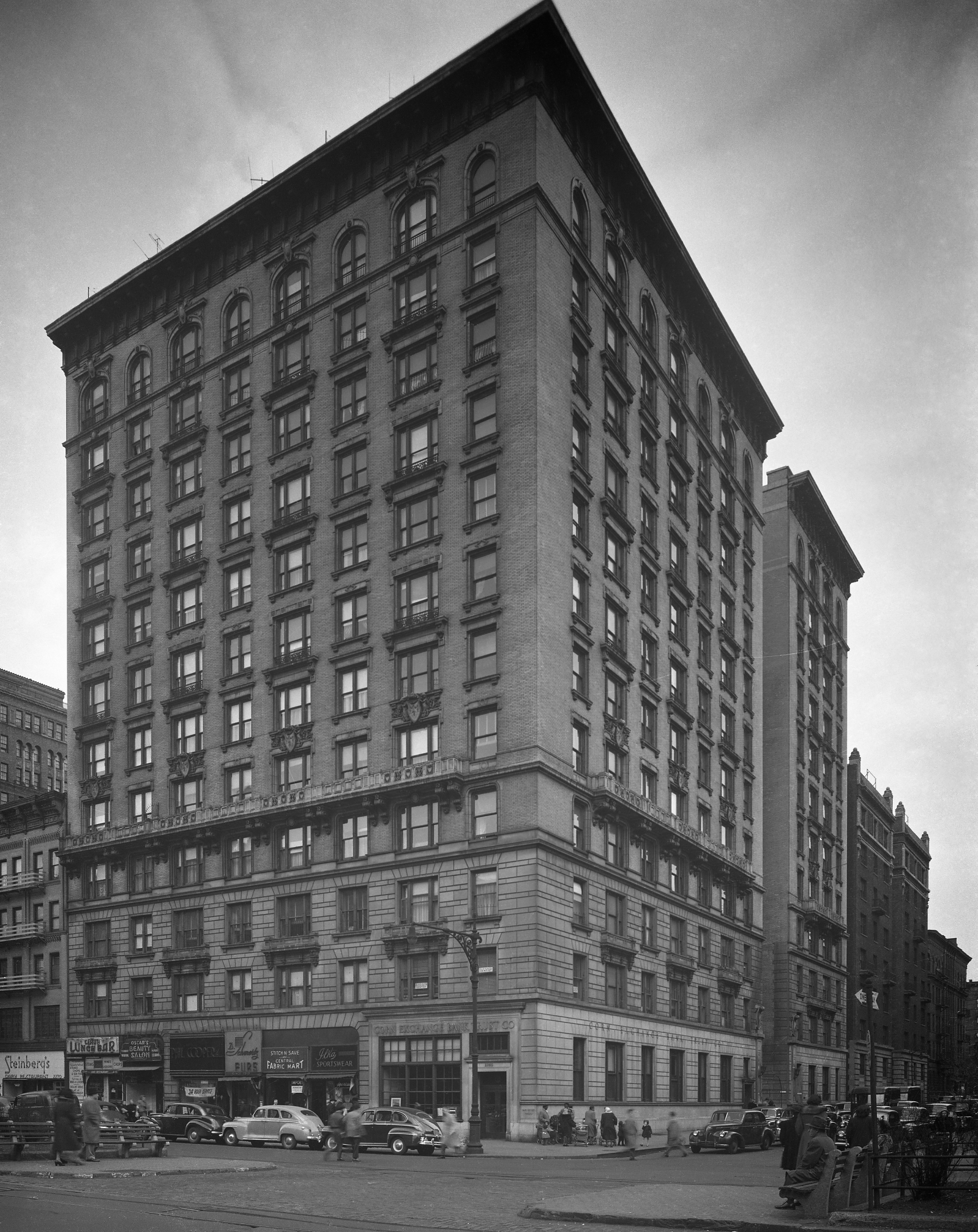
The Anonova
by Tom Miller
As Upper West Side residents increasingly embraced the concept of apartment living, real estate developers razed private homes—some only ten or twenty years old—to erect new, upscale buildings. In the fall of 1912, developer and builder Charles Brogan, hired architect Gaetan Ajello to design another, at the northeast corner of Broadway and West 81st Street. Completed the following year, Ajello designed the sprawling building in the Renaissance Revival style. Twelve stories tall, it was faced in beige brick above a three-story rusticated stone base. The residential entrance was tucked discreetly at the end of a deep light court that created a dramatic approach. Stores lined the Broadway elevation. Among the first commercial tenants was Alice Maynard’s ladies’ shop, which sold “gowns, blouses, wraps, and negligees.”
The apartments, which ranged from five rooms and two baths to seven rooms with three baths, attracted a wide variety of affluent tenants. Among the first to move in was the family of famous actor Lew Fields. Fields had been half of the renowned comedy duo Weber and Fields with Joe Weber, and a partner with him in the Weber and Fields Music Hall. The partnership had dissolved in 1904, and Fields was now performing on his own.
On August 24, 1914, Frances Fields was married in the Gold Room of Delmonico’s restaurant to Charles Lionel Marcus. Afterward, reported The New York Times, about 150 guests stayed for dinner. The article noted that the newlyweds had intended to honeymoon abroad, “but the European war changed their plans.” Instead, they headed for the West.
One sentence in his will raised eyebrows and speculation among gossips.
Another resident in the theatrical field was actress Joy Gardner. The 21-year-old garnered publicity—not necessarily the type she wanted—on December 19, 1915. The Evening Telegram reported that she “to-day drank a quantity of iodine, thinking it medicine.” The article added that the attending doctor at the Knickerbocker Hospital “says she will recover.”
Agnes C. McCormack shared an apartment with her two sisters at the time. A month before Joy Gardner’s name appeared in the newspapers, so did Agnes’s. Peter De Lacy, described by The Evening Telegram as “the poolroom owner and racetrack man,” died on November 13, 1915. The newspaper said he “was credited with having made more than a million dollars from his activities in the sporting world.” One sentence in his will raised eyebrows and speculation among gossips. “I give and bequeath to my friend, Agnes C. McCormack, the sum of $100,000.” It was a sizeable bequest to a “friend”—equal to more than $2.75 million in 2022. A reporter tried to interview Agnes, but she simply said that the news was a “great shock” and refused further comment.
The “European war” that had upset the Marcuses’s honeymoon plans affected another resident, stockbroker John K. Mills, in an even more personal way. As the 39-year-old was passing the Army recruitment booth at Columbus Circle on April 20, 1917, he ripped down the American flag. Arrested for desecration of the flag and disorderly conduct, he initially gave a fictitious name. When he appeared before Magistrate Cornell the following day, it appeared that he had already received a fair share of street justice. The Sun said, “both his eyes were blackened and his face was swollen, evidence of the manhandling he had undergone at the hands of a crowd before the police took him in charge.”
Frank and Marie Roshek, who lived on the top floor, were described by The Sun as “well-to-do.” They had one child, Franklin. On September 21, 1924, he left for the Collegiate School on West 77th Street, but he never arrived there. A search for the 14-year-old broadened from city-wide to national. One report said he had been seen talking to a hunchback, a tip that resulted in several physically deformed persons being interrogated. Frank Roshek offered a reward for return of the boy.
As it turned out, it was all a hoax. Things had been rocky in the Roshek household for some time. Frank, fearing his wife would seek custody, had sent his son into hiding in Washington D.C. When Franklin was discovered there, and brought back to the Roshek apartment, Frank went a step further. He ordered Marie out of the apartment at the point of a gun, threatening “to kill her if she ever came back,” according to her. Father and son were forced to appear in court on October 29, 1924, to answer a writ of habeas corpus secured by Marie. There, she rattled off a string of abuse allegations going back 15 years.
In 1938 the Louis and Lilly Zabar family moved into a fifth-floor apartment. They had opened their new market at 2247-2249 Broadway, just a block to the south, four years earlier. Like almost all the other residents, they had a live-in servant, a maid named Matilda, according to Lori Zabar’s 2022 Zabar’s: A Family History, with Recipes.
The effects Great Depression were perhaps most devastating for the owners of small and mid-sized businesses. Living here when the Zabar family moved in was Abraham Misrack, his wife, and adult son, Henry. Misrack operated a dress shop nearby at 2444 Broadway. On the night of March 31, 1939, he did not arrive home for dinner at 9:00 as was customary. When he had not appeared at midnight, Henry went looking for him. Three hours later, he checked the shop. Tragically, he discovered his father’s body in the backroom where he had hanged himself from a steampipe.
“The officers returned a fourth time yesterday…and Mr. Toback sold them a half-ounce of crack and a half-ounce of powdered cocaine.”
Throughout the decades, the Broadway stores were home to a variety of businesses. In 1973 the Hungarian restaurant Rendez opened in 2262 Broadway. The New York Times journalist John L. Hess deemed it “easily the best” of the five Hungarian eateries he tested in September that year. The 1980’s saw the Robert Payne Furs shop, Citidisc music store, and the Forest and Sea Too restaurant operating along the row.
One commercial tenant got himself in serious trouble in 2000. Pharmacist Barry Toback worked in the Pricewise Discount Pharmacy at 2260 Broadway. But he was dispensing more than antibiotics and blood pressure prescriptions. In March undercover officers from the Manhattan Narcotics Squad visited the drugstore three times, purchasing cocaine from Toback each time. The New York Times reported on March 14, “The officers returned a fourth time yesterday…and Mr. Toback sold them a half-ounce of crack and a half-ounce of powdered cocaine.” It was his last sale and the drugstore had to find a new pharmacist.
In 2008, 219 West 81st Street was converted to condominiums and the façade was restored. The building had never been named, a breach of Upper West Side apartment building tradition since the 1890’s. That was remedied now with a name, the Anonova.
Tom Miller is a social historian and blogger at daytoninmanhattan.blogspot.com
Building Database
Keep Exploring
Be a part of history!
Think Local First to support the business currently at 219 West 81st Street aka 2260 Broadway:
Meet Brenda Lubin!




